WebAssembly, commonly known as Wasm, has been making waves in the tech industry. Originally designed for web browsers, it's now finding its place in server-side applications, cloud computing, and even edge devices. The Cloud Native Computing Foundation (CNCF) recently unveiled a comprehensive overview of the Wasm landscape. Here, we delve deeper into the key highlights from their introduction.
Explore our exclusive introduction to WASM.
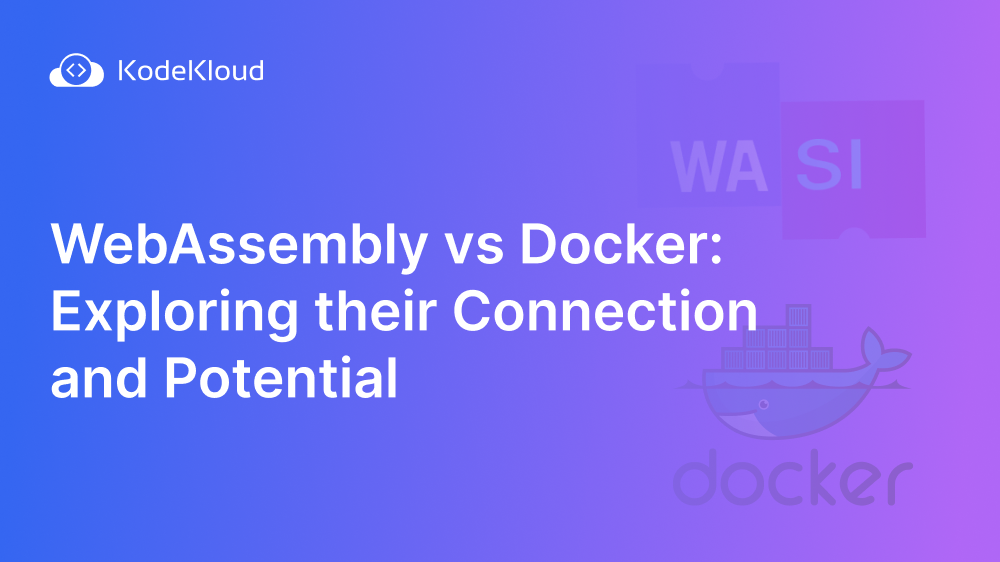
Emergence of "Compile to WASM" Native Languages
The WebAssembly ecosystem is rapidly evolving, and one of the most exciting developments is the rise of native languages specifically designed to compile to WASM. These languages are tailored to leverage the full potential of WebAssembly, ensuring optimal performance, security, and compatibility. Let's delve into two such emerging stars:
Grain: Grain is not just another language on the block; it's a modern, high-level language crafted with WebAssembly in mind. As a native WASM language, Grain offers strong typing and a unique standard library, making it a promising choice for future web applications and beyond. Its design philosophy emphasizes user-friendliness and seamless integration with the WebAssembly ecosystem. Grain Official Site
Moonbit: Moonbit is setting the stage for a new era of web development. As a native WASM language, it is designed from the ground up to provide a seamless development experience for WebAssembly. Moonbit boasts a suite of tools that cater to both novice and experienced developers, ranging from dynamic code completion to online integrated development environments (IDEs). Its architecture ensures that developers can harness the full power of WebAssembly without the overhead of traditional languages.
These native WASM languages are a testament to the growing recognition of WebAssembly's potential. They simplify the development process, reduce the need for intermediary tools, and ensure that applications run efficiently and securely on any platform that supports WebAssembly. As the WebAssembly landscape continues to expand, we can expect to see more innovations and languages tailored to this powerful runtime.
Wasm Runtimes: The Heart of Execution
WebAssembly (WASM) has revolutionized the way we think about web applications, offering near-native performance and a secure execution environment. But to bring this bytecode to life, we need robust runtimes. These runtimes interpret or compile WASM modules on the fly, ensuring that applications run smoothly across different platforms. Let's explore some of the leading runtimes that are shaping the WASM landscape:
WasmEdge: A shining star in the cloud-native realm, WasmEdge is designed to cater to a diverse range of applications, from edge computing to decentralized systems. Its lightweight architecture ensures rapid execution, while its extensible design allows developers to incorporate custom functionalities tailored to specific use cases. Whether you're looking to deploy applications on the edge or build decentralized solutions, WasmEdge provides a reliable foundation. WasmEdge Official Site
Wasmtime & Lucet: These two runtimes, though distinct, come from a similar lineage. Wasmtime offers a standalone environment optimized exclusively for WebAssembly and WASI (WebAssembly System Interface). It's designed for applications that demand consistent performance. On the other hand, Lucet, developed by Fastly, is all about speed. It's tailored for applications that require instantaneous startup, making it ideal for edge computing scenarios where latency is a concern. Wasmtime Official Site
V8: A name synonymous with high performance in the web world, V8 is Google's open-source JavaScript and WebAssembly engine. Powering popular browsers like Chrome, V8 has been at the forefront of web innovation. Its sophisticated optimization techniques ensure that both JavaScript and WebAssembly code execute at blazing speeds, providing users with a seamless web experience. Developers can also leverage V8 outside the browser, thanks to platforms like Node.js, expanding its reach to server-side applications. V8 Official Site
In the ever-evolving world of WebAssembly, these runtimes play a pivotal role. They bridge the gap between the promise of WASM and the tangible benefits users experience, ensuring that applications are not only performant but also secure and portable across a myriad of devices and platforms. As the WASM ecosystem continues to mature, we can anticipate even more advancements in runtime technologies, further solidifying WebAssembly's position as a cornerstone of modern web development.
Application Frameworks: Building with Wasm
In the vast realm of software development, frameworks are the scaffolding that developers rely on. They provide a structured foundation, streamlining the process of building applications by offering pre-written code for common tasks. When it comes to WebAssembly (Wasm), the need for robust frameworks is paramount, given the unique nature and potential of Wasm. Let's delve into two frameworks that are making waves in the Wasm ecosystem:
Spin: Imagine a framework that's tailor-made for WebAssembly, one that seamlessly integrates with leading runtimes and offers a plethora of tools right out of the box. That's Spin for you. Designed with WebAssembly microservices and web applications in mind, Spin provides developers with a rich set of functionalities. Whether you're building a complex web application or a lightweight microservice, Spin, in tandem with the wasmtime runtime, ensures that you have all the tools you need at your fingertips. Its modular architecture allows developers to pick and choose components, ensuring flexibility without compromising on performance. Spin Official Site
WasmCloud: In today's interconnected world, distributed applications are the norm. WasmCloud steps in as a beacon for developers navigating the complexities of distributed application development. Built on the principles of WebAssembly, WasmCloud offers a unique approach, leveraging WebAssembly actors and capability providers. This not only simplifies the development process but also enhances security, ensuring that applications are resilient against common threats. With WasmCloud, developers can focus on crafting their application logic, leaving the intricacies of distributed systems to the framework. It's a testament to the transformative power of WebAssembly and how it's reshaping the landscape of application development. WasmCloud Official Site
Please review our introductory tutorial on WasmCloud.
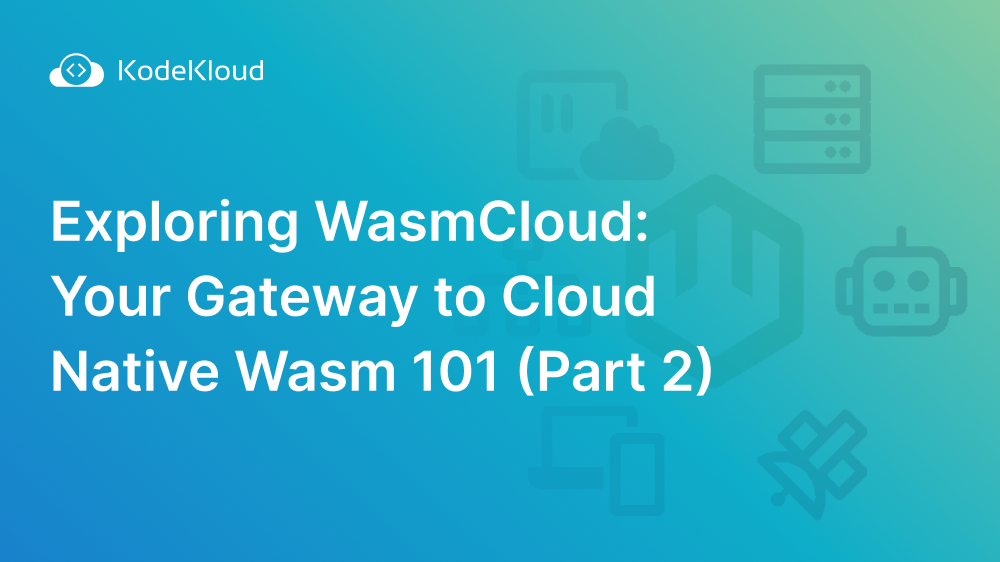
The rise of frameworks like Spin and WasmCloud underscores the growing recognition of WebAssembly's potential. They offer a glimpse into the future of web development, where applications are faster, more secure, and portable across a myriad of platforms. As the Wasm ecosystem continues to flourish, we can expect more such frameworks to emerge, each bringing its unique flavour and innovations to the table, further enriching the developer experience.
Edge/Bare Metal: Wasm's Cross-Platform Mastery
The digital landscape is vast and varied. From powerful cloud servers to tiny IoT devices, the spectrum of computing environments is broad. At the heart of this diversity lies a challenge: How do you ensure consistent application performance across such varied platforms? Enter WebAssembly (Wasm). Its promise of cross-platform compatibility is not just limited to web browsers. Wasm's prowess extends to even the most unconventional computing environments, ensuring that applications run seamlessly, irrespective of where they are deployed. Let's explore some of the trailblazers in this domain:
Genode: In the realm of operating systems, Genode is a breath of fresh air. Instead of following traditional OS architectures, Genode introduces a unique framework that combines a microkernel abstraction layer with a set of user space components. This modular approach allows for a high degree of flexibility, enabling developers to craft tailored solutions for specific use cases. Whether you're building a system for a high-security environment or a lightweight IoT device, Genode provides the tools and the framework to make it happen. Genode Official Site
SeL4 RTOS: In an era where security breaches and system vulnerabilities make headlines, SeL4 RTOS stands as a beacon of reliability. It's not just another microkernel; SeL4 is renowned for its comprehensive formal verification. This ensures that the kernel's implementation aligns perfectly with its specifications, drastically reducing the chances of vulnerabilities. But SeL4 doesn't stop at security; it ensures that this high level of assurance is paired with top-notch performance, making it an ideal choice for environments where both security and efficiency are paramount. SeL4 RTOS Official Site
Unikraft: The concept of unikernels is revolutionary. By stripping down operating systems to the bare essentials required for a specific application, unikernels promise lightweight, fast, and secure solutions. However, building a unikernel can be a daunting task. This is where Unikraft steps in. It offers a development kit that simplifies the unikernel building process. Whether you're crafting a solution for a cloud environment or an embedded system, Unikraft ensures that you have a tailored OS kernel optimized for your application's needs. Unikraft Official Site
The emergence of platforms like Genode, SeL4 RTOS, and Unikraft underscores the versatility of WebAssembly. They highlight how Wasm is not just reshaping web development but is also making inroads into areas like edge computing and bare metal systems. As the boundaries between traditional computing environments blur, tools and platforms that embrace Wasm's cross-platform promise will lead the way, ensuring consistent, efficient, and secure application performance everywhere.
AI Inference: Wasm Meets Machine Learning
In the ever-evolving realm of technology, the convergence of Artificial Intelligence (AI) and WebAssembly (Wasm) stands out as a particularly exciting development. As AI continues to redefine industries and applications, the need for efficient, cross-platform, and secure execution of AI workloads has never been greater. Enter WebAssembly, with its promise of fast, secure, and platform-agnostic execution.
WASI NN Specification: At the heart of this convergence is the WASI NN specification. It acts as a bridge, defining the interactions between Wasm runtimes and native AI/ML libraries. This ensures that AI models can be executed seamlessly within a Wasm environment, leveraging the best of both worlds: the performance of native AI libraries and the security and portability of Wasm.
Leading the Charge: Among the pioneers in this space are Wasm runtimes like Wasmtime, WasmEdge, and WAMR. These runtimes have embraced the WASI NN specification, integrating support for it and thereby enabling high-performance AI inference. Especially noteworthy is the fact that these runtimes allow developers to harness the power of AI within the Rust programming language, which is known for its performance and safety guarantees.
WasmEdge's AI Capabilities: Taking a closer look at WasmEdge, its capabilities in the AI domain are impressive. Not only does it support the WASI NN specification, but it also offers compatibility with a range of AI inference backends like OpenVINO, Pytorch, Tensorflow, and TensorFlow Lite. This means developers can choose the best backend for their specific AI workload. Furthermore, WasmEdge provides support for pre- and post-processors like OpenCV and ffmpeg, enhancing the AI workflow. Its versatility is further highlighted by its support for a diverse set of models, from media processing with mediapipe to document analysis with Document AI and more.
Embedded Functions: Extending Wasm's Reach
The versatility of WebAssembly (Wasm) is evident in its ability to seamlessly integrate into various domains, from web browsers to edge computing. One of the most transformative applications of Wasm is in the realm of embedded functions. By allowing safe execution of user-defined or community-contributed code, Wasm is redefining how we think about databases, data streaming apps, and more.
Databases and WebAssembly: The database domain has always been about speed, reliability, and flexibility. With the integration of Wasm, databases are taking a leap forward.
- Singlestore: Known for its hybrid transactional and analytical processing, Singlestore is leveraging Wasm to execute user-defined functions, offering users the ability to customize their database operations without compromising on performance. Singlestore Official Site
- Libsql: A robust SQL library, Libsql is integrating Wasm to enhance its flexibility, allowing developers to embed custom logic directly into their database operations. Libsql Official Site
- OpenGauss: As an enterprise-grade open-source database, OpenGauss is harnessing the power of Wasm to provide users with a more versatile and performant database experience. OpenGauss Official Site
Message Queues & Traffic Proxies: The world of data streaming and traffic management is all about real-time performance and adaptability. Wasm's integration into this space is a game-changer.
- Open Policy Agent (OPA): A general-purpose policy engine, OPA is utilizing Wasm to allow for custom logic execution, ensuring that policies are enforced consistently across the stack. OPA Official Site
- Redpanda: Designed for mission-critical workloads, Redpanda is a modern streaming platform that's integrating Wasm to enhance its data processing capabilities. Redpanda Official Site
- Envoy: As a high-performance proxy, Envoy is leveraging Wasm to allow developers to embed custom logic directly into the data plane, ensuring efficient and adaptable traffic management. Envoy Official Site.
FaaS Platforms and WebAssembly: The serverless computing paradigm is about agility and scalability. With Wasm, Function-as-a-Service (FaaS) platforms are reaching new heights.
- OpenFunction: Tailored for Kubernetes, OpenFunction is embedding Wasm functions directly into pods, showcasing how WebAssembly can revolutionize serverless computing. OpenFunction Official Site
- Knative: As a Kubernetes-based platform, Knative is harnessing Wasm to provide developers with a more versatile serverless experience, allowing for custom logic execution without the overhead of traditional server management. Knative Official Site
Essential Development Tools: Powering the Wasm Ecosystem
The WebAssembly (Wasm) landscape is vast and ever-evolving, and at its core lies a suite of powerful development tools. These tools not only simplify the process of creating Wasm applications but also ensure that developers can harness the full potential of this revolutionary technology. Let's delve into some of the essential tools that are shaping the Wasm ecosystem:
Cargo: For those venturing into the world of Rust and WebAssembly, Cargo is nothing short of a lifeline. Cargo is the default package manager for the Rust programming language. But it's more than just a package manager; it's a comprehensive tool that handles project building and dependency management. With built-in support for WebAssembly, Cargo makes it seamless for Rust developers to compile their code into Wasm binaries. It manages dependencies, builds projects, and even facilitates testing, ensuring that Rust developers have everything they need to create robust Wasm applications.
Official Site: Cargo's Documentation
LLVM: The Low-Level Virtual Machine (LLVM) is a name that resonates with many in the development community, and its contribution to the Wasm ecosystem is significant. LLVM is a collection of modular and reusable compiler and toolchain technologies. It provides an intermediate form between the high-level source code and machine code, allowing for optimization before the final compilation. With its modular architecture, LLVM can be adapted to compile various programming languages into WebAssembly. Any language with an LLVM backend can, in theory, be compiled into Wasm, making it a versatile tool in the Wasm development toolkit.
Official Site: LLVM Project
Emscripten: Bridging the gap between traditional languages like C and C++ and the world of WebAssembly, Emscripten is a toolchain that deserves special mention. Emscripten is a source-to-source compiler that transforms C and C++ code into WebAssembly or JavaScript. Leveraging the capabilities of LLVM and Binaryen, Emscripten provides developers with a streamlined path to convert their existing C and C++ codebases into WebAssembly. It comes with libraries that emulate the functionality of traditional systems, ensuring that ported applications run efficiently in web environments.
Official Site: Emscripten's Documentation
The success and adaptability of WebAssembly can be attributed in large part to the robust tools that support its development. Whether you're a Rust aficionado, a C++ veteran, or someone exploring the vast possibilities of Wasm, the ecosystem is equipped with tools to guide you on your journey.
Orchestration & Management - The Backbone of Deployment
In the realm of WebAssembly (Wasm), as applications grow in complexity, so does the need for efficient orchestration and management. Ensuring that Wasm applications are seamlessly deployed, scaled, and managed is crucial. This is where a suite of tools and platforms come into play, acting as the backbone of deployment and ensuring that Wasm applications deliver on their promise of performance and portability.
OCI Runtimes - Crun: Crun is an OCI (Open Container Initiative) compliant runtime. It's designed to be lightweight, fast, and, most importantly, efficient in resource usage. While Crun is not exclusive to Wasm, its efficiency and speed make it a suitable choice for running containerized Wasm applications, ensuring they operate at peak performance.
Official Site: Crun's GitHub Repository
Container Shims - Runwasi: Runwasi is a container shim designed specifically for WebAssembly. A container shim acts as an intermediary layer, facilitating communication between the container runtime and the application. Tailored for the Wasm ecosystem, Runwasi ensures that Wasm applications run smoothly within container environments, bridging any compatibility gaps and ensuring efficient execution.
Official Site: Runwasi's GitHub Repository
Kubernetes Tools for Wasm
- Kuasar: An innovative tool designed for Kubernetes, Kuasar simplifies the deployment of Wasm applications within Kubernetes clusters.
- Kwasm: Another Kubernetes-centric tool, Kwasm focuses on optimizing the deployment and scaling of Wasm applications, ensuring they integrate seamlessly with existing Kubernetes workflows.
- container2wasm: As the name suggests, container2wasm is all about transforming traditional container applications into WebAssembly format, making them ready for deployment in Wasm-friendly environments.
Official Sites: Kuasar's GitHub, Kwasm's GitHub, container2wasm's GitHub
Hosted Platforms - Hassle-free Wasm Deployment
In today's fast-paced digital landscape, developers seek platforms that simplify the deployment process, reduce operational overhead, and ensure optimal performance. Hosted platforms have emerged as the go-to solution for WebAssembly (Wasm) applications. They offer a seamless deployment environment without the intricacies of manual setup and management. Let's delve into some of the leading platforms in this space:
Fermyon Cloud: Fermyon Cloud is a managed platform tailored for WebAssembly applications. It offers a suite of tools and services that streamline the deployment, scaling, and monitoring of Wasm apps. With its focus on WebAssembly, Fermyon Cloud ensures that Wasm applications benefit from optimized performance, security, and scalability. Its user-friendly interface and robust backend infrastructure make it a top choice for developers venturing into the Wasm landscape.
Official Site: Fermyon Cloud
Cosmonic: Cosmonic is a platform-as-a-service (PaaS) that provides a holistic environment for deploying and managing WebAssembly applications. It integrates seamlessly with popular development tools and offers a range of features to enhance the Wasm deployment experience. Cosmonic's strength lies in its comprehensive toolset, which includes features like auto-scaling, monitoring, and security enhancements. Its commitment to simplifying the Wasm deployment process makes it a preferred choice for many developers.
Official Site: Cosmonic
We will soon be hosting a '101 Tutorial' on Cosmonic App development at the KodeKloud Blog.
AKS (Azure Kubernetes Service): While AKS is primarily known as a managed Kubernetes service offered by Microsoft Azure, it has extended its capabilities to support WebAssembly applications. AKS simplifies the deployment, management, and scaling of containerized applications using Kubernetes. With its robust infrastructure and integration with Azure services, AKS provides a conducive environment for Wasm applications. Developers can leverage Azure's global network, ensuring their Wasm apps are accessible and performant regardless of the user's location.
Official Site: Azure Kubernetes Service
Decentralized Platforms - The New Frontier
The decentralized world is witnessing a paradigm shift with the integration of WebAssembly (Wasm) into blockchain networks. As the promise of blockchain technology continues to unfold, the need for scalable, efficient, and interoperable solutions becomes paramount. WebAssembly, with its portability and performance, is proving to be a game-changer in this domain. Let's explore how some of the leading decentralized platforms are harnessing the power of Wasm:
Polkadot: Polkadot is a multi-chain blockchain platform that enables different blockchains to interoperate and share information. Polkadot uses Wasm for its runtime execution, allowing for on-chain upgrades without the need for hard forks. This ensures that the network remains agile and adaptable.
Official Site: Polkadot
NEAR: NEAR is a decentralized application platform designed to make apps usable on the web. NEAR employs Wasm for smart contract execution, ensuring fast, efficient, and secure operations within its ecosystem.
Official Site: NEAR Protocol
Dfinity: Dfinity's Internet Computer is a revolutionary public network that aims to expand the functionality of the internet. The Internet Computer utilizes Wasm for its canister smart contracts, providing developers with a flexible and powerful environment.
Official Site: Dfinity
GEAR: GEAR is a relay chain for offloading and reading computational results from different blockchains. GEAR uses Wasm for its computational modules, ensuring consistent and efficient execution across different blockchains.
Official Site: GEAR Protocol
Ripple: Ripple is a digital payment protocol that enables secure, instant, and nearly free global transactions. While Ripple's primary focus isn't on Wasm, there are ongoing discussions and proposals in the community about integrating Wasm for smart contract capabilities.
Official Site: Ripple
Filecoin: Filecoin is a decentralized storage network that turns cloud storage into an algorithmic market. Filecoin is exploring Wasm for various functionalities, including smart contract execution and data processing.
Official Site: Filecoin
EOS: EOS is a blockchain platform for the development of decentralized applications (dapps). EOSIO, the software behind EOS, uses Wasm as its smart contract engine, offering developers a robust and efficient environment for dapp creation.
Official Site: EOS
Debugging & Observability - Ensuring Continuous Excellence
In the realm of software development, the importance of debugging and observability cannot be overstated. As WebAssembly (Wasm) continues to gain traction, the need for specialized tools to monitor, debug, and refine Wasm applications becomes paramount. Ensuring that Wasm applications run seamlessly, efficiently, and securely is a top priority for developers. Let's delve into some of the tools that are making waves in the Wasm debugging and observability space:
WASI Logging: WASI (WebAssembly System Interface) logging is a specification that provides logging capabilities to Wasm modules. It allows Wasm applications to interact with the host environment's logging facilities. Logging is a critical aspect of observability. With WASI logging, developers can gain insights into the runtime behavior of their Wasm applications, identify issues, and optimize performance.
Key Features:
- Standardized logging interface for Wasm modules.
- Seamless integration with host logging systems.
- Enables real-time monitoring of Wasm applications.
Official Site: WASI Logging (Note: The official WASI repository might contain more details on logging specifications)
Modsurfer: Modsurfer is a tool designed for debugging and observability of Wasm modules. While specific details about Modsurfer might need further exploration, tools of this nature typically offer visualization, profiling, and analysis capabilities for Wasm binaries. As Wasm applications grow in complexity, having a dedicated tool like Modsurfer can significantly streamline the debugging process. It provides developers with a granular view of their Wasm code, helping pinpoint inefficiencies, bottlenecks, and potential security vulnerabilities.
Key Features:
- Visualization of Wasm module structures.
- Profiling capabilities to analyze performance.
- Detailed insights into function calls, memory usage, and more.
Official Site: Modsurfer (Note: The official link for Modsurfer might need to be sourced from relevant repositories or platforms.)
Artifact Repositories - Safeguarding Wasm's Legacy
In the digital age, artifact repositories serve as the guardians of software's rich tapestry, ensuring that code, packages, and modules are not only preserved but also easily accessible to developers across the globe. As WebAssembly (Wasm) continues its meteoric rise, the role of artifact repositories in safeguarding its legacy becomes even more crucial. These repositories not only store Wasm modules but also provide essential tools for versioning, dependency management, and security. Let's explore some of the prominent repositories that are shaping the Wasm landscape:
Docker Hub: Docker Hub is a cloud-based registry service that allows developers to link code repositories, build details, and more into a centralized resource. While Docker Hub is primarily known for container images, its versatility means it can also host Wasm artifacts. It provides a vast ecosystem for developers to share and distribute their Wasm applications.
Key Features:
- Automated build processes.
- Integrated with Docker's container platform.
- Extensive community support.
Official Site: Docker Hub
Harbor: Harbor is an open-source container image registry that secures images with role-based access control, vulnerability scanning, and more. Harbor's emphasis on security makes it a trusted repository for storing and distributing Wasm modules.
Key Features:
- Role-based access control.
- Image vulnerability scanning.
- Replication capabilities for multi-cloud deployments.
Official Site: Harbor
Warg: Warg is a dedicated repository for Wasm artifacts, though specific details might require further exploration. Specialized repositories like Warg cater specifically to the needs of the Wasm community, ensuring that Wasm modules are stored, versioned, and distributed efficiently.
Key Features:
- Tailored for Wasm artifacts.
- Seamless integration with Wasm development tools.
- Community-driven development and support.
Official Site: Warg (Note: The official link for Warg might need to be sourced from relevant repositories or platforms.)
wapm: wapm (WebAssembly Package Manager) is a package manager and registry for WebAssembly modules and commands. wapm simplifies the process of publishing, distributing, and installing Wasm packages, making it a cornerstone of the Wasm ecosystem.
Key Features:
- Command-line interface for easy package management.
- Supports both browser and server-side Wasm modules.
- Integrated with the Wasmer runtime.
Official Site: wapm
crates.io: crates.io is the Rust community's official crate registry, hosting libraries and packages for the Rust programming language. With Rust being a popular language for Wasm development, crates.io plays a pivotal role in hosting and distributing Wasm-compatible Rust packages.
Key Features:
- Extensive library of Rust crates.
- Integrated with the Cargo package manager.
- Community-driven with active contributions.
Official Site: crates.io
Unlock the power of WebAssembly (WASM) with our comprehensive course:
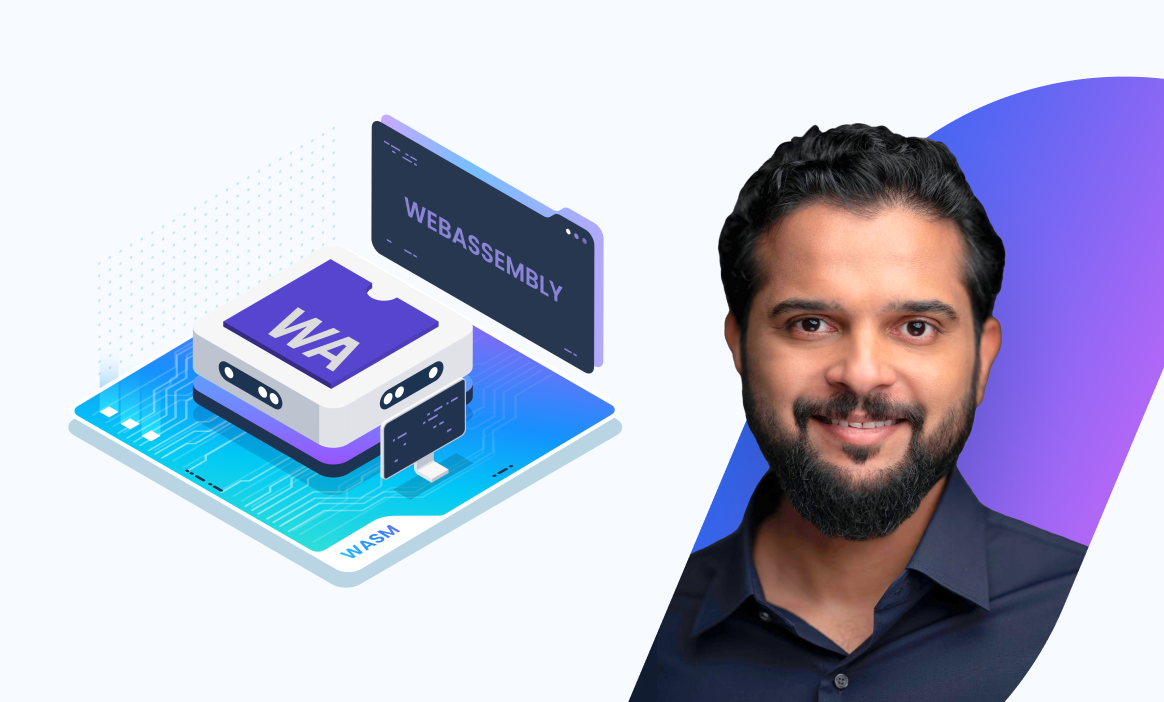
Final Thoughts...
The digital realm is in the midst of a transformative phase, with WebAssembly (Wasm) at its epicenter. As we've journeyed through the vast landscape of Wasm, from its native languages to its integration into decentralized platforms, it's evident that Wasm is not just a fleeting trend but a technological marvel set to redefine the boundaries of web and application development.
The emergence of languages tailored for Wasm, the robust runtimes ensuring seamless execution, and the frameworks simplifying application building all underscore the versatility and power of WebAssembly. Furthermore, its cross-platform compatibility, especially in non-traditional systems, showcases Wasm's adaptability and forward-thinking design.
The integration of Wasm in AI inference, its expanding reach in embedded functions, and the plethora of development tools available are testaments to the vibrant and ever-evolving Wasm ecosystem. With orchestration, management tools, and hosted platforms simplifying deployment, and decentralized platforms exploring its potential, Wasm's influence is far-reaching.
However, the journey doesn't end here. The emphasis on debugging, observability, and the safeguarding of Wasm artifacts through dedicated repositories ensures that as the Wasm community grows, it remains grounded in best practices, ensuring quality and excellence.
In essence, WebAssembly is more than just bytecode for the web; it's a beacon of innovation, collaboration, and limitless potential. As developers, stakeholders, and technology enthusiasts, we are witnessing a revolution, and the future is undoubtedly Wasm-centric.
More on WASM:
- Exploring WasmCloud: Your Gateway to Cloud Native Wasm 101 (Part 2)
- Introduction to Cloud-Native Wasm: The Basics of Next-Gen Cloud Computing (Part 1)
- What's New in Docker + Wasm Technical Preview 2
- WebAssembly vs. Docker: Exploring their Connection and Potential
- Complete Docker + Wasm Tutorial: From C++ Code to Wasm Container
- What Is WebAssembly and Docker + Wasm? An in-Depth Look



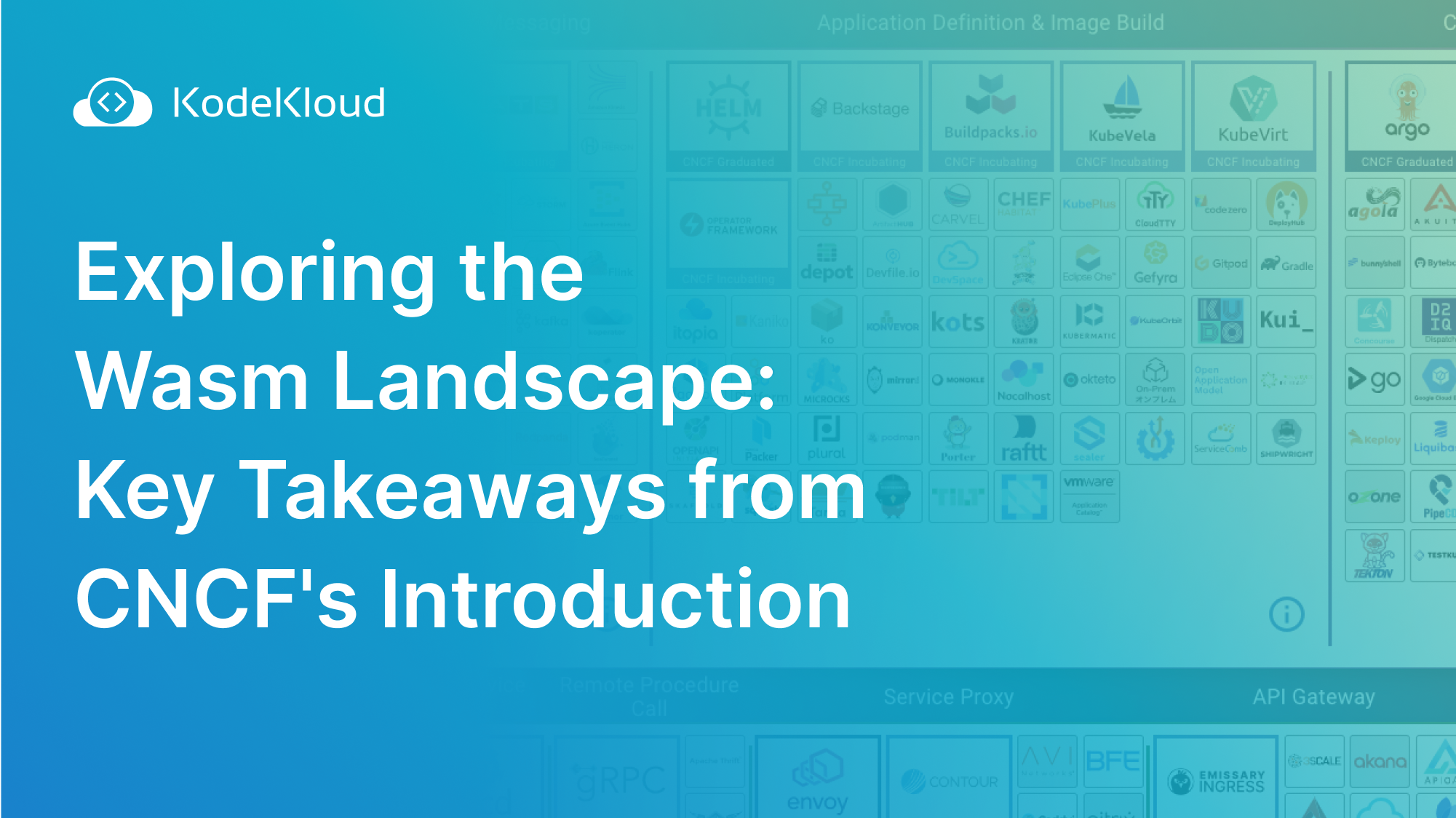














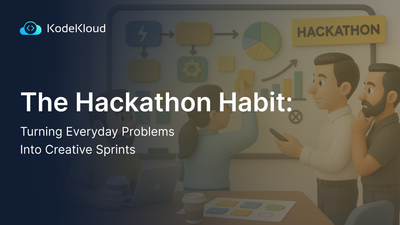
Discussion